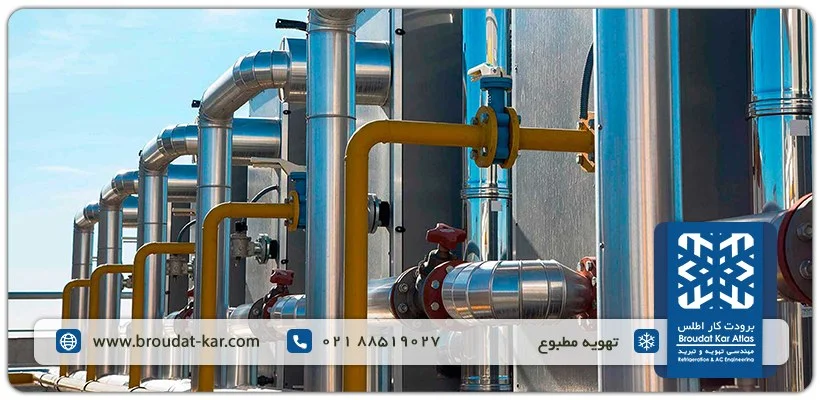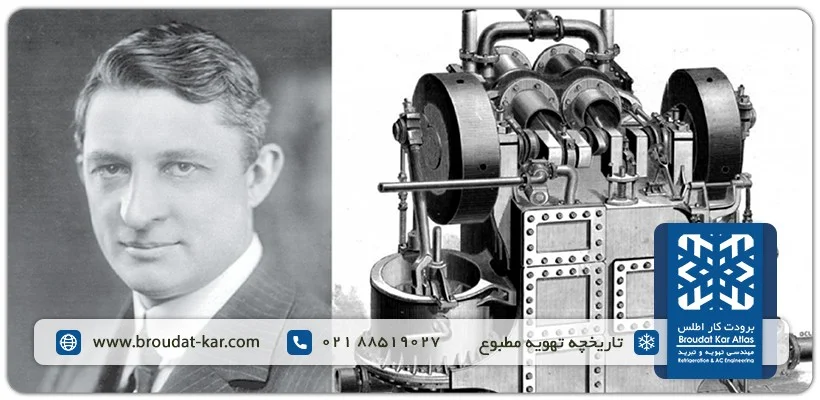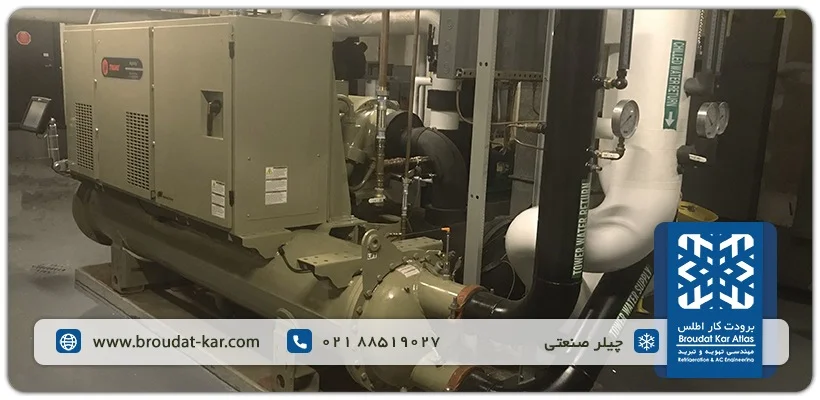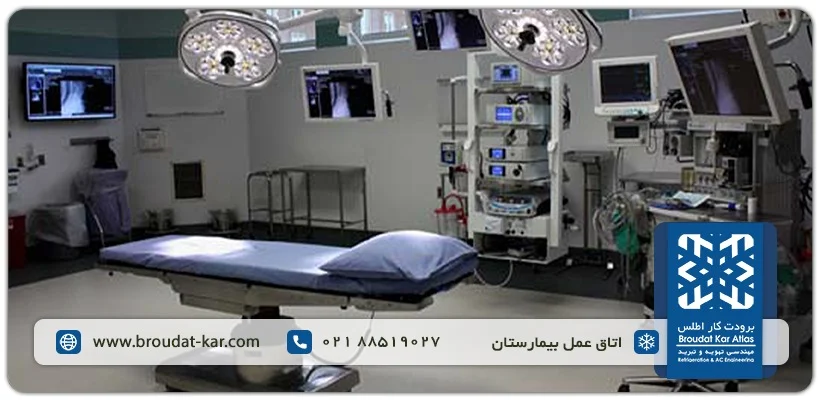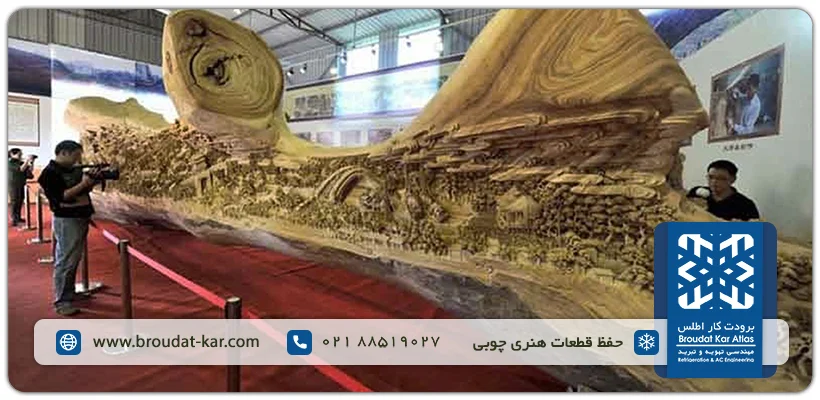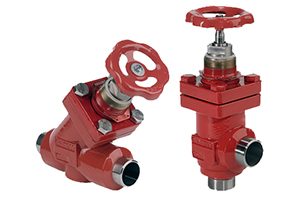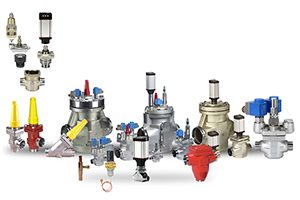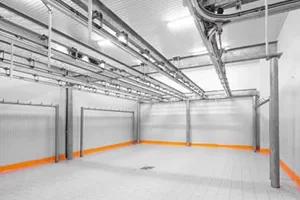What is Air Conditioning?
Air conditioning encompasses the regulation of temperature, humidity, and air quality within indoor spaces, aiming to establish a comfortable and conducive environment. This involves employing diverse cooling and heating techniques to manage temperature and air circulation within buildings or confined areas.
Heating, Ventilation, and Air Conditioning (HVAC) form an expansive industry spectrum. Air conditioning systems span a wide spectrum, ranging from compact home heaters to highly sophisticated systems controlling the atmosphere in submarines and spacecraft. Cooling systems vary significantly, from small household units to industrial refrigeration systems with capacities that differ by orders of magnitude, reaching up to 10,000 tons.
The design of an air conditioning system must account for more than just ensuring a comfortable temperature, depending on the complexity of requirements. Various factors beyond basic comfort necessitate consideration in the system’s design.
An air conditioning system is a process used to create and maintain a specific temperature, relative humidity, and air purity within a building. The type of air conditioning system varies based on the building’s intended use.
History of Air Conditioning
For millennia, people relied on fire for heating, with the natural movement of air around the burning flames serving as a rudimentary form of ventilation. However, the introduction of hot water heaters and steam for heating necessitated the development of visible ventilation systems. In the late 1800s, hand-calculated designs for ventilation systems emerged and gained widespread adoption in various countries.
In 1851, Dr. John Gorrie successfully invented a refrigeration machine, paving the way for the industrial use of refrigeration in the subsequent decades. Initially applied to freezing meat for transportation and ice production, refrigeration systems evolved to include a new initiative in the early 20th century: cooling buildings for enhanced comfort. Notably, the air conditioning system installed at the New York Stock Exchange in 1902 stands as one of the earliest examples of cooling systems. During this period, the term “air conditioning” primarily denoted cooling, but it’s meaning gradually expanded to encompass the control of various parameters such as temperature, humidity, the supply of fresh air, filtration of airborne particles, and air circulation in enclosed spaces.
Today, the significance of air conditioning lies in its ability to control these parameters, and its true purpose is realized when it effectively meets all the needs and requirements of a given space.
Modern Air Conditioning
Modern air conditioning holds immense importance across various facets of advanced human activities today. The direct impact of air quality on individuals is undeniable. However, dissatisfaction persists in many countries worldwide regarding prevalent issues like asthma, indoor air quality in buildings, and airplane air quality. These concerns stem from intricate reasons and effects, giving rise to a vital technical and engineering field dedicated to investigating and addressing such challenges. Key among these challenges are issues such as greenhouse gas emissions, global warming, and ozone layer depletion, which remain focal points of contemporary research.
Furthermore, the establishment of new laws and guidelines has spurred the adoption of processes aimed at promoting sustainability. These include initiatives like recycling, utilizing renewable energies, reducing energy consumption, and employing low-pollution raw materials, notably in the case of refrigerants. Collectively, these issues exert a profound influence on the design of buildings, encompassing considerations for air conditioning systems and design codes.
Introduction to the Air Conditioning Process
The term “air conditioning” accurately applies when control over all essential parameters—temperature, humidity, fresh air, filtration, and circulation—is involved. Achieving ideal air conditioning involves seven primary processes:
- Heating: Adding thermal energy to the ventilation space to raise or maintain the temperature at a constant heating point.
- Cooling: Removing thermal energy from the ventilation space to lower or maintain the temperature at a constant cooling point.
- Humidification: Adding water vapor to the air in the ventilation space to increase or maintain humidity at a constant level.
- Dehumidification: Removing water vapor from the air in the ventilation space to reduce or maintain humidity at a constant level.
- Filtration: Removing air-borne particles (such as dust) and biological pollutants (like pollen, insects) from the air to enhance air quality.
- Ventilation: Exchanging air between the exterior and the ventilation space to dilute gas pollutants, improve air quality, and regulate composition and freshness. This can occur naturally (via open windows) or through mechanical means (using fans).
- Air Circulation: Circulating and mixing indoor air to enhance ventilation and achieve uniform temperatures throughout the environment.
Designing air conditioning systems involves considering these seven aspects for each space, accommodating the specific expectations, needs, and requirements of its intended use. Each element plays a crucial role in ensuring optimal air quality and comfort within the designated area.
Types of Air Conditioning
The ventilation industry encompasses an array of devices, spanning from water coolers to cooling processes in major sectors like oil, gas, and nuclear industries. Broadly, air conditioning systems fall into two categories: Residential and Industrial, each tailored with specific equipment to suit their distinct needs. As our company primarily operates within the industrial air conditioning sector, here’s an overview of some of the devices we specialize in:
- Chiller: Industrial chillers are robust systems designed to produce cold water, essential for extracting heat from industrial processes or large areas. These systems circulate a refrigerant to absorb heat from air or water. Available in various types—like reciprocating piston, scroll and screw compressors, absorption, and centrifugal chillers—each type offers specific advantages for diverse applications. Chillers find widespread use in chemical processing, food and beverage production, data centers, pharmaceuticals and more. Their pricing varies based on cooling capacity, efficiency, and specific industrial requirements.
- Cooling Tower: Integral to industrial air conditioning, cooling towers extract heat from water or other process fluids. By evaporating a fraction of water in circulation, they create forced air currents, dissipating heat from the remaining water and cooling the fluid. Typically used in tandem with chillers to release heat from the chiller’s condenser, industrial cooling towers are prevalent in power plants, petrochemical facilities, manufacturing, and large-scale ventilation and refrigeration systems. Pricing depends on size, materials, heat dissipation capacity, and specific application needs.
- Air Handling Unit (AHU): AHUs are pivotal in industrial air conditioning, distributing air through ductwork across various areas. These sizable, independent units comprise fans, filters, dampers, heating and cooling coils, and controls.
- Ice Bank: This technology, gaining traction in industrial air conditioning, employs ice as a thermal energy storage medium. It’s particularly beneficial for managing peak cooling loads and optimizing energy efficiency. By storing thermal energy in ice form, the ice bank system offers flexibility and control over ventilation operations, making it invaluable for industrial settings.
These are a few examples of industrial air conditioning equipment our company specializes in. We also offer heat exchangers and specialized systems tailored to unique cooling needs in industrial settings.
Optimize your business environment with our commercial air conditioning systems.
Practical Example of Industrial Air Conditioning Design
Understanding the specific requirements of an air conditioning system is indeed crucial before selection. Let’s delve into the design considerations and performance requirements for various specific projects:
Example One: Poultry Farming Hall
- Design Goals: Economic factors, animal health, and regulatory compliance are key concerns. Ventilation is vital, and depending on climatic conditions, heating or cooling might be necessary, often controlled by a simple thermostat. Ventilation speed is determined by:
–Maintaining Air Quality: Eliminating waste and animal odors.
–Regulating Temperature: Providing cold air and exhausting warm air.
–Moisture Control: Injecting dry air and exhausting moist air.
–Creating Airflow on Animals: High airflow aids in cooling.
- Important Note: Humidification and filtration might not be required. A well-designed ventilation system targeting these objectives can notably reduce initial and operational costs.
Example Two: Hospital Operating Room
- Design Goals: This critical environment demands a highly specialized air conditioning system, aiming for:
-Heating and Cooling: Preventing body temperature fluctuations for patients and surgical team comfort.
-Temperature Control: Maintaining temperatures between 18°C to 26°C.
-Humidification: Reducing static electricity sparks and fostering a comfortable environment for the surgical team.
-Moisture Control: Preventing fungal growth and ensuring comfort.
-Air Quality: Employing efficient filters to eliminate airborne organisms and infections.
-Ventilation: Removing airborne pollutants and maintaining fresh air, ensuring a uniform airflow to minimize contamination.
Example Three: Preservation of Wooden Art Pieces
- Design Goals: Maintaining low humidity to prevent fungal growth while preventing air dryness and fire risk. Preventing warping or cracking of wooden pieces due to humidity changes is crucial. The challenge lies in maintaining constant moisture and temperature levels while minimizing required ventilation. These spaces usually require adherence to all seven air conditioning processes, creating fully air-conditioned spaces.
Each example highlights the unique demands of different environments and underscores the necessity for tailored air conditioning systems to meet specific project requirements effectively.
Features Affecting Comfort in the Environment
Understanding the factors influencing comfort in a space is crucial. Among these, temperature and air quality are directly managed by the air conditioning system. Let’s explore how each factor affects comfort:
- Temperature Conditions: It’s not solely about air temperature. Airspeed affects perception—high speeds feel cold, while stagnation feels uncomfortable. The air conditioning system primarily controls airspeed.
- Air Quality: Influenced by occupants and elements in the space. Fresh air intake reduces pollution levels. Spaces with high density or activities like cooking demand more fresh air.
- Noise Level: Various sources contribute to noise, including traffic, occupants, equipment, and the air conditioning system. Noise design requirements vary per space; studios need more stringent standards than workshops.
- Lighting: Lighting design impacts perceived temperature as light sources emit both light and heat. This affects the overall feeling of warmth or coolness in a space.
- Architecture: Architectural elements like sunlight through windows influence perceived comfort, irrespective of the space’s temperature.
While temperature and air quality are directly managed, noise, lighting, and architectural elements significantly impact comfort without direct control by the air conditioning system. Understanding these factors helps create more holistic and comfortable environments.
The Effects of Individual’s perception and feelings on Air Conditioning
Individuals’ perceptions and feelings regarding air conditioning are influenced by their health status, vulnerability, and expectations, thereby impacting comfort levels in various environments.
- Health: One’s health status plays a significant role in how they perceive air conditioning. For someone in good health, the cooling effect may be pleasant, but it might discomfort patients waiting for medical appointments in a clinic.
- Vulnerability: Different levels of vulnerability exist among individuals. For instance, walking on a cold floor with shoes might not bother some, while it could be unpleasant for a child playing directly on the cold ground.
- Expectations: Individual expectations shape comfort perceptions. Someone accustomed to a certain temperature might find a space uncomfortably cold, contrasting with someone expecting a cooler environment.
These factors, health, vulnerability, and expectations, greatly influence how individuals perceive the effects of air conditioning, contributing to varied comfort levels in different environments. Understanding these factors helps in designing air conditioning systems that cater to diverse needs and preferences.
The Impact of Clothing and Activities on Air Conditioning
The amount of clothing individuals wear significantly influences their perception of comfort regarding air conditioning in a space.
- Clothing: The amount and type of clothing people wear directly affect their perception of comfort regarding temperature. For instance, individuals in minimal clothing, as at a swimming pool, would prefer a warmer comfort temperature range compared to those in heavy clothing.
- Activities: Engaging in different activities generates varying levels of body heat. For example, individuals involved in strenuous activities, like exercising in a gym, produce more heat and might find a cooler temperature range more comfortable than those working sedentarily in an office.
Understanding how clothing choices and activities impact body temperature helps in adjusting air conditioning systems to accommodate diverse preferences and comfort levels within different spaces.
Air Conditioning Price and Buying Guide
The pricing of an air conditioning system for a project depends on several factors. To estimate costs accurately, it’s essential to determine the system type that aligns with the environmental conditions and specific design needs. In the realm of industrial ventilation, categorizing system prices poses practical challenges. However, approximate prices for chillers can be found on our chiller page. For precise information on solutions and air conditioning system prices, we encourage you to reach out to us. Our experts can swiftly provide the best and most cost-effective solutions tailored to your requirements. We’ll now delve into the key factors that significantly impact air conditioning prices.
- Customization and Design of HVAC Systems
The accurate determination of an HVAC system’s price hinges on considering the customization and design required for a specific space. Each building or facility comes with distinctive ventilation needs, influenced by factors like size, layout, insulation, and usage patterns. These elements directly impact the type and capacity of the necessary HVAC system.
A thorough analysis and design process are vital to identify the suitable equipment, ductwork, controls, and other essential components. Without this crucial stage, providing an accurate price estimate becomes unfeasible. The intricacies of each space necessitate a tailored approach to ensure the HVAC system aligns perfectly with the specific requirements of the environment.
- Cooling Load Calculation
Proper capacity sizing of an HVAC system requires a comprehensive thermodynamic calculation of the cooling load. This calculation considers factors such as heat gain from external sources, internal heat sources, occupancy levels, and the type of usage and ventilation requirements. The cooling load directly impacts the required capacity and performance of the system. Without an accurate cooling load calculation, determining the appropriate type and size of the HVAC system is impossible, challenging the accuracy of the price estimate.
- Selection of Appropriate Equipment
Choosing ventilation equipment involves considering multiple factors such as usage, energy efficiency, features, and technological advancements. Manufacturers offer diverse options at varying prices. When selecting equipment, it’s crucial to factor in specific space needs, including temperature control, humidity management, and air quality requirements.
Thoroughly evaluating available options is necessary to identify the best fit for the project. Without a meticulous selection process that considers these essential elements, accurately pricing the HVAC system becomes challenging. The suitability of the equipment directly impacts the system’s effectiveness in meeting the unique demands of the space, making a comprehensive evaluation imperative for an accurate price assessment.
- Additional Factors and Considerations
The price of an HVAC system is influenced by several additional factors beyond the equipment itself. Installation complexity, modifications or installation of ductwork, electrical needs, zoning requirements, and specialized components for specific applications all contribute to system complexity and cost.
Without a precise understanding of project requirements, providing an accurate price estimate becomes challenging. Customization, design processes, cooling load calculations, and equipment selection are crucial stages influencing system cost. The unique features and cooling needs of each space require careful consideration when determining the type, capacity, and suitable components.
It’s impossible to ascertain the HVAC system price before the design and selection stages due to these complexities. Collaboration with experienced HVAC professionals and leveraging innovative technologies is key to improving processes and enhancing system efficiency. This approach ensures that the system chosen aligns precisely with the specific demands of the environment, optimizing performance and efficiency.
HVAC System Services
Atlas Refrigeration Co., Ltd. brings over three decades of expertise in refrigeration and HVAC systems, committed to serving valued clients with excellence. Our range of HVAC system services includes:
- Free Consultation: Engage with our engineering team for tailored guidance and insights.
- Customized Design: Crafted solutions to suit the unique requirements of each project.
- HVAC System Fabrication: Precision crafting and assembly of HVAC systems.
- Installation and Commissioning: Professional setup and activation of systems.
- Training and Maintenance: Equipping clients with the knowledge for system upkeep.
- Repairs, if Necessary: Swift and efficient resolution for any issues.
At Atlas Refrigeration Co., Ltd., our belief is that the sale marks the beginning of our commitment, not its end. Our engineering team remains steadfastly available to aid clients throughout their HVAC and cooling system projects.
As part of our dedication, we offer a special warranty period and an extensive 10-year after-sales service. Should you require any consultation regarding HVAC and refrigeration systems, reach out to us through the contact information provided on our website. Alternatively, submit your needs and requirements via our consultation form for a callback from our consulting engineering team. We’re here to support your HVAC endeavors every step of the way.
Closing Remarks
HVAC (Heating, Ventilation, and Air Conditioning) plays a pivotal role in shaping the health, productivity, and comfort levels across residential, commercial, and industrial spaces. Engineering HVAC systems involves meticulous selection and application of suitable equipment, aimed at boosting system efficiency, optimizing energy usage, and elevating indoor air quality.
By fostering collaboration with industry experts and embracing cutting-edge technologies, the realm of HVAC presents significant potential for process enhancement and heightened system efficiency. This continuous pursuit of improvement is key to ensuring that HVAC systems consistently meet the evolving demands of diverse environments, thereby enriching the lives and experiences of occupants.
It is recommended to service your air conditioning system annually. This service includes cleaning the coils, checking the coolant and oil levels, inspecting and replacing filters, and ensuring all components are functioning properly.
Common problems in air conditioning systems include refrigerant leaks, dirty or frozen coils, clogged filters, malfunctioning thermostats, electrical issues, and inadequate maintenance, all of which can lead to reduced efficiency or system failure.
Independent systems such as split or ducted split units cover only a single room or apartment, while central systems like chillers with air handling units (AHUs) or fan coils are designed for the entire building, providing integrated energy management and climate control.
For most units, the EER or SEER is typically between 8 and 12, while high-efficiency inverter models can reach 16 or higher. The COP usually ranges from 2.5 to 4.5.
The placement of the outdoor unit directly affects efficiency and lifespan. It should be installed in a well-ventilated area, with easy access for maintenance, and away from direct sunlight or pollutants.
Related posts
HVAC (Heating, Ventilation, and Air Conditioning)
Ammonia Valves | Applications of Ammonia and Operating Conditions Ammonia valves play a crucial role in regulating the refrigerant within
Valves and Control Devices in Ammonia and Freon Refrigeration Systems The variety of valves and control devices in refrigeration systems
What is Ducted Split? A ducted split system, also known as a duct split, is an HVAC configuration that
